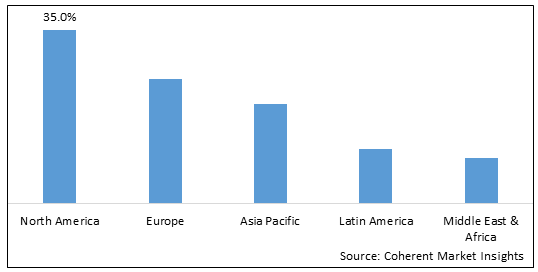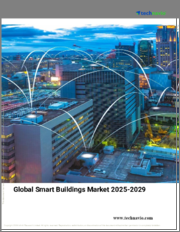
|
시장보고서
상품코드
1424438
건물 에너지 시뮬레이션 소프트웨어 시장 : 컴포넌트별, 용도별, 최종 용도 산업별, 도입 모델별, 조직 규모별, 지역별Building Energy Simulation Software Market, By Component, By Application, By End-use Industry, By Deployment Model, By Organization Size, By Geography |
||||||
세계의 건물 에너지 시뮬레이션 소프트웨어 시장 규모는 2023년에 48억 달러로 평가되며 2023-2030년 CAGR 12.1%로 성장하며, 2030년에는 107억 달러에 달할 것으로 예측되고 있습니다.
| 리포트 범위 | 리포트 상세 | ||
|---|---|---|---|
| 기준년 | 2022년 | 2023/2024년 시장 규모 | 48억 달러 |
| 실적 데이터 | 2017-2021년 | 예측 기간 | 2023-2030 |
| 예측 기간 2023년/2024-2030년/2031년 CAGR : | 12.10% | 2030/2031년 가치 예측 | 107억 달러 |

건물 에너지 시뮬레이션 소프트웨어에 의해 건축가 및 엔지니어는 건물의 에너지 성능을 평가하고 건물이 에너지 자원을 얼마나 효율적으로 사용할 수 있는지 이해할 수 있습니다. 조명, 난방, 냉방, 환기 및 기타 건물 시스템을 가상으로 평가하여 지속가능하고 에너지 효율적인 건물을 설계할 수 있도록 돕습니다. 이 시뮬레이션 툴은 지속적인 열 분석을 통해 외피, 사용된 건축자재, 난방, 환기 및 공조(HVAC) 시스템 등 건물과 다양한 컴포넌트의 연간 에너지 소비량과 비용을 추정합니다. 설계 과정의 초기 단계에서 에너지 효율을 최적화하기 위해 설계를 개선할 수 있는 부분을 파악하여 비용이 많이 드는 실수를 방지할 수 있습니다. 환경 문제에 대한 관심이 높아지고 그린 빌딩에 대한 정부의 엄격한 규제로 인해 건물 에너지 시뮬레이션에 대한 수요가 전 세계에서 증가하고 있습니다.
시장 역학 :
세계 건물 에너지 시뮬레이션 소프트웨어 시장은 지속가능한 건축 관행과 기존 건물의 리노베이션 필요성에 의해 주도되고 있습니다. 또한 신축 상업용 건물에 대한 각국 정부의 엄격한 에너지 효율 기준도 이러한 소프트웨어의 채택을 촉진하고 있습니다. 그러나 전문 시뮬레이션 툴의 높은 비용과 툴을 효과적으로 사용하기 위한 전문 지식의 부족은 시장 성장을 제한하는 요인으로 작용하고 있습니다. 주요 업체들은 이러한 문제를 해결하고 비즈니스 기회를 창출하기 위해 고급 기능을 갖춘 합리적인 가격대의 사용자 친화적인 솔루션을 개발하는 데 주력하고 있습니다. 또한 클라우드 기반 시장 개척과 최적화 및 자동화를 제공하는 AI/ML 기능의 통합은 전 세계에서 건물 에너지 시뮬레이션의 대응 가능한 시장을 확대하고 있습니다.
본 조사의 주요 특징
- 세계의 건물 에너지 시뮬레이션 소프트웨어 시장을 상세히 분석하고, 2022년을 기준년으로 한 예측 기간(2023-2030년)의 시장 규모 및 연간 평균 성장률(CAGR%)을 제공합니다.
- 또한 다양한 부문에 걸친 잠재적 매출 성장 기회를 설명하고, 이 시장에 대한 매력적인 투자 제안 매트릭스에 대해 해설하고 있습니다.
- 또한 시장 촉진요인, 억제요인, 기회, 신제품의 발매 및 승인, 시장 동향, 지역별 전망, 주요 기업이 채택하는 경쟁 전략 등에 관한 중요한 인사이트도 제공하고 있습니다.
- 기업 하이라이트, 제품 포트폴리오, 주요 하이라이트, 실적, 전략 등의 파라미터에 기반하여 세계의 건물 에너지 시뮬레이션 소프트웨어 시장의 주요 기업을 프로파일링하고 있습니다.
- 본 리포트로부터의 인사이트에 의해 마케팅 담당자 및 기업의 경영진은 향후 제품 발매, 유형 업그레이드, 시장 확대, 마케팅 전술에 관한 정보에 기반한 의사결정을 시행할 수 있습니다.
- 이 조사 리포트는 투자자, 공급업체, 제품 제조업체, 유통업체, 신규 참여업체, 재무 애널리스트 등 이 업계의 다양한 이해관계자를 대상으로 하고 있습니다.
- 이해관계자는 세계의 건물 에너지 시뮬레이션 소프트웨어 시장 분석에 사용되는 다양한 전략 매트릭스를 통해 의사결정을 용이하게 할 수 있습니다.
목차
제1장 조사의 목적과 전제조건
- 조사 목적
- 전제조건
- 약어
제2장 시장 전망
- 리포트 설명
- 시장의 정의와 범위
- 주요 요약
- Coherent Opportunity Map(COM)
제3장 시장 역학, 규제, 동향 분석
- 시장 역학
- 에너지 효율에 관한 정부의 규제와 정책
- 높은 도입 비용
- 넷 제로 에너지 빌딩의 출현
- 영향 분석
- 주요 하이라이트
- 규제 시나리오
- 제품의 발매/승인
- PEST 분석
- Porter의 산업 분석
- 합병과 인수 시나리오
제4장 건물 에너지 시뮬레이션 소프트웨어 시장 - 코로나바이러스(COVID-19) 팬데믹의 영향
- 신종 코로나바이러스 감염증(COVID-19)의 역학
- 공급측과 수요측 분석
- 경제적 영향
제5장 건물 에너지 시뮬레이션 소프트웨어 시장, 컴포넌트별, 2017-2030년
- 소프트웨어
- 서비스
- 기타
제6장 건물 에너지 시뮬레이션 소프트웨어 시장, 용도별, 2017-2030년
- 상업 빌딩
- 주택
- 정부 건물
- 기타
제7장 건물 에너지 시뮬레이션 소프트웨어 시장, 최종 용도 산업별, 2017-2030년
- 건축과 건설
- 정부와 방위
- 자동차와 운송
- 제조 엔지니어링
- 기타
제8장 건물 에너지 시뮬레이션 소프트웨어 시장, 도입 모델별, 2017-2030년
- 온프레미스
- 클라우드 기반
제9장 건물 에너지 시뮬레이션 소프트웨어 시장, 조직 규모별, 2017-2030년
- 중소기업
- 대기업
제10장 건물 에너지 시뮬레이션 소프트웨어 시장, 지역별, 2017-2030년
- 북미
- 미국
- 캐나다
- 유럽
- 독일
- 영국
- 프랑스
- 이탈리아
- 스페인
- 러시아
- 기타 유럽
- 아시아태평양
- 중국
- 인도
- 일본
- 호주
- 한국
- ASEAN
- 기타 아시아태평양
- 라틴아메리카
- 브라질
- 멕시코
- 기타 라틴아메리카
- 중동 및 아프리카
- 남아프리카공화국
- GCC 국가
- 기타 중동 및 아프리카
제11장 경쟁 구도
- Autodesk, Inc.
- IES(Integrated Environmental Solutions)
- Bentley Systems
- Dassault Systemes
- EnergyPlus
- CYPE Software
- DesignBuilder Software
- IESVE(IES Virtual Environment)
- Carrier
- Others
제12장 섹션
- 조사 방법
- 출판사 소개
The global building energy simulation software market size was valued at US$ 4.80 billion in 2023 and is expected to reach US$ 10.7 billion by 2030, growing at a compound annual growth rate (CAGR) of 12.1% from 2023 to 2030.
| Report Coverage | Report Details | ||
|---|---|---|---|
| Base Year: | 2022 | Market Size in 2023/2024: | US$ 4.80 Bn |
| Historical Data for: | 2017 to 2021 | Forecast Period: | 2023 - 2030 |
| Forecast Period 2023/2024 to 2030/2031 CAGR: | 12.10% | 2030/2031 Value Projection: | US$ 10.7 Bn |

Building energy simulation software allows architects and engineers to assess the energy performance of buildings and understand how efficiently a building will utilize energy resources. It helps in designing sustainable and energy-efficient structures by evaluating lighting, heating, cooling, ventilation, and other building systems virtually. These simulation tools estimate annual energy consumption and costs of a building and its various components such as envelope, construction materials used, and heating, ventilation, and air conditioning (HVAC) systems, through continuous thermal analysis. They identify areas where design can be improved to optimize energy efficiency early in the design process itself, thus avoiding costly mistakes. With growing environmental concerns and stringent government regulations towards green buildings, the demand for building energy simulation is rising globally.
Market Dynamics:
The global building energy simulation software market is driven by the need for sustainable construction practices and retrofitting of existing buildings. Stringent energy efficiency standards by governments worldwide regarding new commercial buildings have also pushed the adoption of such software. However, high costs of specialized simulation tools and dearth of expertise to use these tools effectively are limiting the market growth. Key players are focusing on developing affordable and user-friendly solutions with advanced capabilities to address these challenges and tap opportunities. The development of cloud-based offerings and the integration of AI/ML functionalities providing optimization and automation are also expanding the addressable market for building energy simulation globally.
Key Features of the Study:
- This report provides an in-depth analysis of the global building energy simulation software market, and provides market size (US$ Billion) and compound annual growth rate (CAGR%) for the forecast period (2023-2030), considering 2022 as the base year
- It elucidates potential revenue growth opportunities across different segments and explains attractive investment proposition matrices for this market
- This study also provides key insights about market drivers, restraints, opportunities, new product launches or approvals, market trends, regional outlook, and competitive strategies adopted by key players
- It profiles key players in the global building energy simulation software market based on the following parameters - company highlights, products portfolio, key highlights, financial performance, and strategies
- Key companies covered as a part of this study include Autodesk, IES, Bentley Systems, Dassault Systemes, EnergyPlus, and others
- Insights from this report would allow marketers and the management authorities of the companies to make informed decisions regarding their future product launches, type up-gradation, market expansion, and marketing tactics
- The global building energy simulation software market report caters to various stakeholders in this industry including investors, suppliers, product manufacturers, distributors, new entrants, and financial analysts
- Stakeholders would have ease in decision-making through various strategy matrices used in analyzing the global building energy simulation software market
Detailed Segmentation:
- By Component:
- Software
- Services
- Others
- By Application:
- Commercial Buildings
- Residential Buildings
- Government Buildings
- Others
- By End-use Industry:
- Architecture & Construction
- Government & Defense
- Automotive & Transportation
- Manufacturing & Engineering
- Others
- By Deployment Model:
- On-premise
- Cloud-based
- By Organization Size:
- SMEs
- Large Enterprises
- By Region
- North America
- Europe
- Asia Pacific
- Latin America
- Middle East & Africa
- Top Companies in the Building Energy Simulation Software Market
- Autodesk, Inc.
- IES (Integrated Environmental Solutions)
- Bentley Systems
- Dassault Systemes
- EnergyPlus
- CYPE Software
- DesignBuilder Software
- IESVE (IES Virtual Environment)
- Carrier
- eQUEST
- Trane Technologies
- IES TaP
- IES SCAN
- Trimble
- EnergySoft
Table of Contents
1. Research Objectives and Assumptions
- Research Objectives
- Assumptions
- Abbreviations
2. Market Purview
- Report Description
- Market Definition and Scope
- Executive Summary
- Market Building Energy Simulation Software, By Component
- Market Building Energy Simulation Software, By Application
- Market Building Energy Simulation Software, By End-use Industry
- Market Building Energy Simulation Software, By Deployment Model
- Market Building Energy Simulation Software, By Organization Size
- Market Building Energy Simulation Software, By Region
- Coherent Opportunity Map (COM)
3. Market Dynamics, Regulations, and Trends Analysis
- Market Dynamics
- Government regulations and policies for energy efficiency
- High deployment costs
- Emergence of net zero energy buildings
- Impact Analysis
- Key Highlights
- Regulatory Scenario
- Product Launches/Approvals
- PEST Analysis
- PORTER's Analysis
- Merger and Acquisition Scenario
4. Building Energy Simulation Software Market - Impact of Coronavirus (COVID-19) Pandemic
- COVID-19 Epidemiology
- Supply Side and Demand Side Analysis
- Economic Impact
5. Building Energy Simulation Software Market, By Component, 2017-2030, (US$ Bn)
- Introduction
- Market Share Analysis, 2023 and 2030 (%)
- Y-o-Y Growth Analysis, 2018 - 2030
- Segment Trends
- Software
- Introduction
- Market Size and Forecast, and Y-o-Y Growth, 2017-2030,(US$ Bn)
- Services
- Introduction
- Market Size and Forecast, and Y-o-Y Growth, 2017-2030,(US$ Bn)
- Others
- Introduction
- Market Size and Forecast, and Y-o-Y Growth, 2017-2030,(US$ Bn)
6. Building Energy Simulation Software Market, By Application, 2017-2030, (US$ Bn)
- Introduction
- Market Share Analysis, 2023 and 2030 (%)
- Y-o-Y Growth Analysis, 2018 - 2030
- Segment Trends
- Commercial Buildings
- Introduction
- Market Size and Forecast, and Y-o-Y Growth, 2017-2030,(US$ Billion)
- Residential Buildings
- Introduction
- Market Size and Forecast, and Y-o-Y Growth, 2017-2030,(US$ Billion)
- Government Buildings
- Introduction
- Market Size and Forecast, and Y-o-Y Growth, 2017-2030,(US$ Billion)
- Others
- Introduction
- Market Size and Forecast, and Y-o-Y Growth, 2017-2030,(US$ Billion)
7. Building Energy Simulation Software Market, By End-use Industry, 2017-2030, (US$ Bn)
- Introduction
- Market Share Analysis, 2023 and 2030 (%)
- Y-o-Y Growth Analysis, 2018 - 2030
- Segment Trends
- Architecture & Construction
- Introduction
- Market Size and Forecast, and Y-o-Y Growth, 2017-2030,(US$ Billion)
- Government & Defense
- Introduction
- Market Size and Forecast, and Y-o-Y Growth, 2017-2030,(US$ Billion)
- Automotive & Transportation
- Introduction
- Market Size and Forecast, and Y-o-Y Growth, 2017-2030,(US$ Billion)
- Manufacturing & Engineering
- Introduction
- Market Size and Forecast, and Y-o-Y Growth, 2017-2030,(US$ Billion)
- Others
- Introduction
- Market Size and Forecast, and Y-o-Y Growth, 2017-2030,(US$ Billion)
8. Building Energy Simulation Software Market, By Deployment Model, 2017-2030, (US$ Bn)
- Introduction
- Market Share Analysis, 2023 and 2030 (%)
- Y-o-Y Growth Analysis, 2018 - 2030
- Segment Trends
- On-premise
- Introduction
- Market Size and Forecast, and Y-o-Y Growth, 2017-2030,(US$ Billion)
- Cloud-based
- Introduction
- Market Size and Forecast, and Y-o-Y Growth, 2017-2030,(US$ Billion)
9. Building Energy Simulation Software Market, By Organization Size, 2017-2030, (US$ Bn)
- Introduction
- Market Share Analysis, 2023 and 2030 (%)
- Y-o-Y Growth Analysis, 2018 - 2030
- Segment Trends
- SMEs
- Introduction
- Market Size and Forecast, and Y-o-Y Growth, 2017-2030,(US$ Billion)
- Large Enterprises
- Introduction
- Market Size and Forecast, and Y-o-Y Growth, 2017-2030,(US$ Billion)
10. Building Energy Simulation Software Market, By Region, 2017-2030, (US$ Bn)
- Introduction
- Market Share Analysis, By Country, 2023 and 2030 (%)
- Y-o-Y Growth Analysis, For Country, 2018 -2030
- Country Trends
- North America
- Introduction
- Market Size and Forecast, and Y-o-Y Growth, By Component, 2017-2030,(US$ Bn)
- Market Size and Forecast, and Y-o-Y Growth, By Application, 2017-2030,(US$ Bn)
- Market Size and Forecast, and Y-o-Y Growth, By End-use Industry, 2017-2030,(US$ Bn)
- Market Size and Forecast, and Y-o-Y Growth, By Deployment Model, 2017-2030,(US$ Bn)
- Market Size and Forecast, and Y-o-Y Growth, By Organization Size, 2017-2030,(US$ Bn)
- Market Share Analysis, By Country, 2017 and 2030
- U.S.
- Canada
- Europe
- Introduction
- Market Size and Forecast, and Y-o-Y Growth, By Component, 2017-2030,(US$ Bn)
- Market Size and Forecast, and Y-o-Y Growth, By Application, 2017-2030,(US$ Bn)
- Market Size and Forecast, and Y-o-Y Growth, By End-use Industry, 2017-2030,(US$ Bn)
- Market Size and Forecast, and Y-o-Y Growth, By Deployment Model, 2017-2030,(US$ Bn)
- Market Size and Forecast, and Y-o-Y Growth, By Organization Size, 2017-2030,(US$ Bn)
- Market Share Analysis, By Country, 2017 and 2030
- Germany
- U.K.
- France
- Italy
- Spain
- Russia
- Rest of Europe
- Asia Pacific
- Introduction
- Market Size and Forecast, and Y-o-Y Growth, By Component, 2017-2030,(US$ Bn)
- Market Size and Forecast, and Y-o-Y Growth, By Application, 2017-2030,(US$ Bn)
- Market Size and Forecast, and Y-o-Y Growth, By End-use Industry, 2017-2030,(US$ Bn)
- Market Size and Forecast, and Y-o-Y Growth, By Deployment Model, 2017-2030,(US$ Bn)
- Market Size and Forecast, and Y-o-Y Growth, By Organization Size, 2017-2030,(US$ Bn)
- Market Share Analysis, By Country, 2017 and 2030
- China
- India
- Japan
- Australia
- South Korea
- ASEAN
- Rest Of Asia Pacific
- Latin America
- Introduction
- Market Size and Forecast, and Y-o-Y Growth, By Component, 2017-2030,(US$ Bn)
- Market Size and Forecast, and Y-o-Y Growth, By Application, 2017-2030,(US$ Bn)
- Market Size and Forecast, and Y-o-Y Growth, By End-use Industry, 2017-2030,(US$ Bn)
- Market Size and Forecast, and Y-o-Y Growth, By Deployment Model, 2017-2030,(US$ Bn)
- Market Size and Forecast, and Y-o-Y Growth, By Organization Size, 2017-2030,(US$ Bn)
- Market Share Analysis, By Country, 2017 and 2030
- Brazil
- Mexico
- Rest Of Latin America
- Middle East & Africa
- Introduction
- Market Size and Forecast, and Y-o-Y Growth, By Component, 2017-2030,(US$ Bn)
- Market Size and Forecast, and Y-o-Y Growth, By Application, 2017-2030,(US$ Bn)
- Market Size and Forecast, and Y-o-Y Growth, By End-use Industry, 2017-2030,(US$ Bn)
- Market Size and Forecast, and Y-o-Y Growth, By Deployment Model, 2017-2030,(US$ Bn)
- Market Size and Forecast, and Y-o-Y Growth, By Organization Size, 2017-2030,(US$ Bn)
- Market Share Analysis, By Country, 2017 and 2030
- South Africa
- GCC Countries
- Rest of the Middle East & Africa
11. Competitive Landscape
- Autodesk, Inc.
- Company Highlights
- Product Portfolio
- Key Developments
- Financial Performance
- Strategies
- IES (Integrated Environmental Solutions)
- Bentley Systems
- Dassault Systemes
- EnergyPlus
- CYPE Software
- DesignBuilder Software
- IESVE (IES Virtual Environment)
- Carrier
- Others
- Analyst Views
12. Section
- Research Methodology
- About us



















